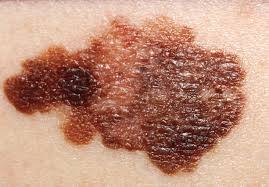How to Prevent Melanoma: Understanding, Protecting, and Advocating for Skin Health
Introduction:
Melanoma, the deadliest form of skin cancer, has seen a concerning rise in incidence over the past few decades. It's not just a condition affecting the elderly; young adults are increasingly at risk too. However, the encouraging news is that melanoma is often preventable. By understanding its causes, recognizing risk factors, and adopting preventive measures, we can significantly reduce its prevalence. In this comprehensive guide, we delve into the depths of melanoma prevention, equipping you with the knowledge to safeguard your skin health effectively.
Understanding Melanoma:
Melanoma originates in melanocytes, the cells responsible for producing melanin, the pigment that gives skin its color. When melanocytes undergo malignant transformation, they give rise to melanoma. This cancer can develop anywhere on the body, but it most commonly occurs on areas exposed to the sun, such as the face, neck, arms, and legs.
One of the key contributors to melanoma is exposure to ultraviolet (UV) radiation, whether from the sun or artificial sources like tanning beds. UV radiation damages the DNA in skin cells, increasing the risk of mutations that can lead to cancer. Other risk factors include a history of sunburns, fair skin, a family history of melanoma, and a weakened immune system.
Preventive Measures:
Preventing melanoma revolves around minimizing exposure to UV radiation and adopting healthy lifestyle habits. Here are some effective preventive measures:
1. Sun Protection:
- Wear protective clothing: Opt for lightweight, long-sleeved shirts, pants, and wide-brimmed hats to shield your skin from the sun's harmful rays.
- Use sunscreen: Apply a broad-spectrum sunscreen with an SPF of 30 or higher generously to all exposed skin, including your face, neck, ears, and hands. Reapply every two hours, or more frequently if swimming or sweating.
- Seek shade: Limit your time in direct sunlight, especially during peak hours between 10 a.m. and 4 p.m. When outdoors, find shade under umbrellas, trees, or other structures.
2. Avoid Tanning Beds:
- Indoor tanning exposes the skin to concentrated UV radiation, significantly increasing the risk of melanoma and other skin cancers. Avoid tanning beds altogether and opt for safer alternatives like self-tanning products if you desire a bronzed appearance.
3. Perform Regular Skin Checks:
- Conduct monthly self-examinations to monitor for any changes in moles, freckles, or other skin lesions. Use the ABCDE rule as a guide: asymmetry, border irregularity, color variation, diameter larger than a pencil eraser, and evolving size, shape, or color.
- Schedule annual skin exams with a dermatologist, especially if you have a history of melanoma or other risk factors.
4. Promote Sun-Safe Behaviors:
- Educate yourself and others, including family members, friends, and colleagues, about the importance of sun protection and early detection of skin cancer.
- Encourage the use of protective clothing, sunscreen, and shade when engaging in outdoor activities, particularly among children and adolescents.
5. Maintain a Healthy Lifestyle:
- Prioritize a balanced diet rich in fruits, vegetables, whole grains, and lean proteins to support overall health and strengthen the immune system.
- Avoid smoking and excessive alcohol consumption, as these habits can impair immune function and increase susceptibility to cancer.
6. Stay Informed and Advocate for Change:
- Stay updated on the latest research and recommendations regarding melanoma prevention and treatment.
- Advocate for policies and initiatives that promote sun safety in schools, workplaces, and communities, such as providing shade structures in outdoor spaces and implementing educational programs on skin cancer awareness.
Conclusion:
Preventing melanoma requires a multifaceted approach that encompasses both individual behaviors and broader societal efforts. By understanding the risk factors associated with melanoma and adopting proactive measures to protect our skin from UV radiation, we can significantly reduce the incidence and impact of this deadly disease. Remember, skin health is not just a personal responsibility but a collective endeavor to safeguard the well-being of ourselves and future generations. Let's commit to prioritizing sun safety, advocating for change, and promoting a culture of skin health awareness. Together, we can make strides in the prevention of melanoma and ensure a brighter, healthier future for all.


